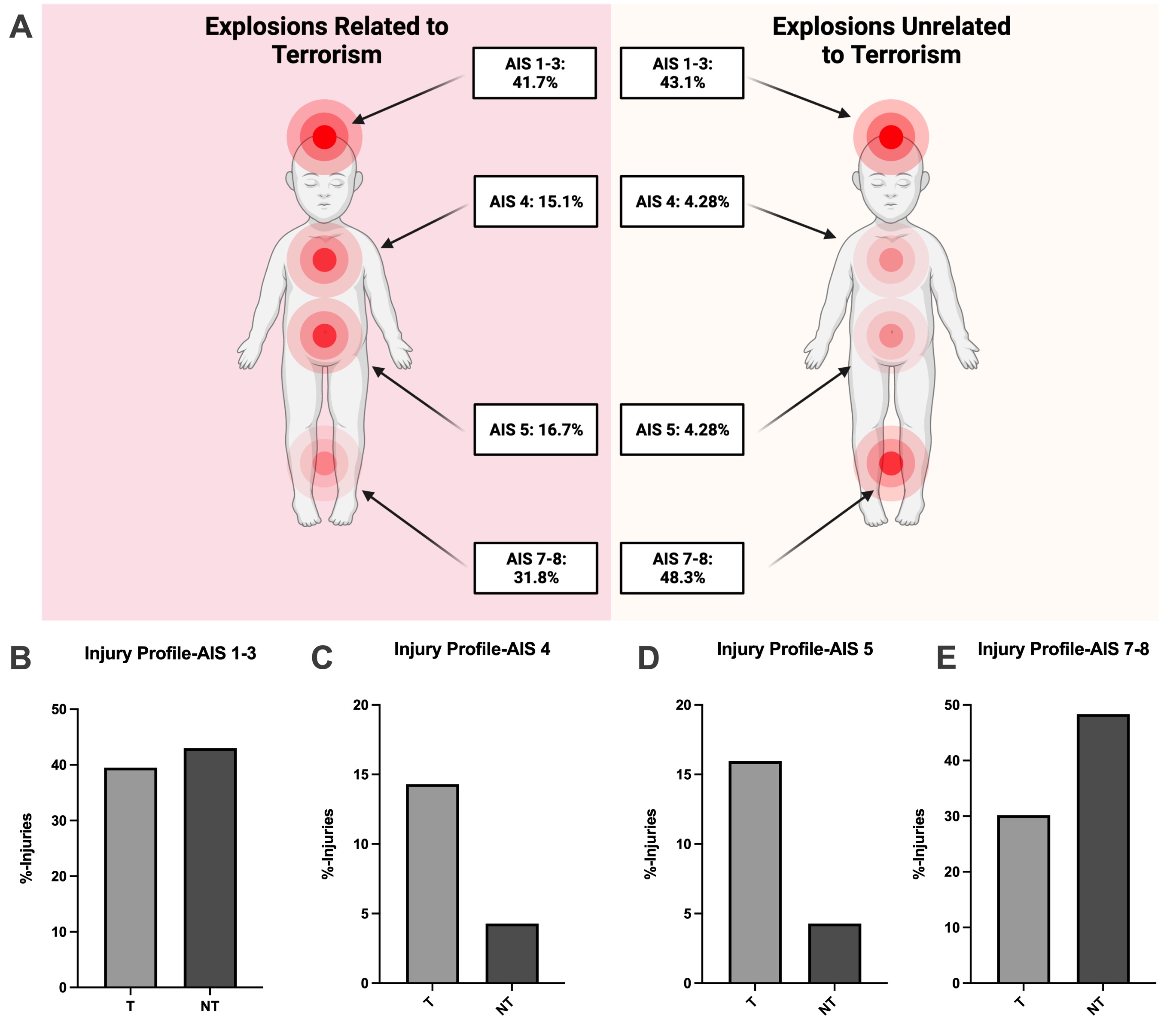Emergency Medicine: All Areas
Category: Abstract Submission
Emergency Medicine XV
63 - Factors Associated with Pediatric Blast Trauma Mortality and Injury Patterns: A Systematic Review and Meta-Analysis.
Monday, April 25, 2022
3:30 PM - 6:00 PM US MT
Poster Number: 63
Publication Number: 63.408
Publication Number: 63.408
Matthew A. Tovar, George Washington University School of Medicine and Health Sciences, Washington, DC, United States; Rebecca A. Pilkington, Virginia Commonwealth University School of Medicine, Stafford, VA, United States; Tress Goodwin, Children's National Hospital, Washington, DC, United States; Jeremy Root, Children's National Hospital, Washington, DC, United States

Matthew A. Tovar
Medical Student
George Washington University School of Medicine and Health Sciences
Washington, District of Columbia, United States
Presenting Author(s)
Background: Blast polytrauma is among the most serious mechanisms of injury confronted by medical providers. There are currently no specific studies or guidelines that define risk factors for mortality in the context of pediatric blast injuries or give the pediatric blast injury profile.
Objective: The objectives of this study were to evaluate environmental risk factors for mortality and differences in injury profiles between explosions related to terrorism within the pediatric population.
Design/Methods: A PRISMA systematic review and meta-analysis was performed, where articles published between the years 2000-2021 were extracted from PUBMED. Mortality and injury profile data were extracted from articles that met inclusion criteria. A bivariant unadjusted odds ratio analysis was performed to establish protective and harmful factors associated with mortality and to describe the injury profiles of blasts related to terrorism. Demographic characteristics and injury profile data were also analyzed for statistical significance via Welch’s t-test. Statistical significance was established at p < 0.05.
Results: Thirty-nine articles were included and described a total of 222,685 unique injuries. Factors associated with increased mortality included if the explosion was related to terrorism (OR 34.73, 95% CI [30.62-39.39], p < 0.05) and if the explosion involved high-grade explosives utilized in the global war on terror (OR 1.16, 95% CI [1.01-1.35], p < 0.05). Factors associated with decreased mortality included if the patient was resuscitated in a NATO-affiliated combat trauma hospital (OR 0.37, 95% CI [0.29-0.47], p < 0.05); if the explosive was fireworks (OR 3.20x10-5, 95%CI [2.00x10-6-5.16x10-4], p < 0.05); and if the explosion occurred in the United States (OR 2.40x10-5, 95% CI [1.51x10-6-3.87x10-4], p < 0.05). On average, victims of explosions related to terrorism were 11.1 years old (SD 2.46) with 73.24% (SD 14.94%) of victims reported as male. Comparison of victims of explosions related to terrorism revealed a higher incidence of thoracoabdominal trauma (31.8% vs. 8.56%), similar incidence of craniofacial trauma (41.7% vs. 43.1%), and lower incidence of extremity trauma (48.3% vs. 31.8%), compared to victims of explosions unrelated to terrorism.Conclusion(s): Explosions related to terrorism are associated with increased mortality and unique injury profiles compared to explosions unrelated to terrorism in the pediatric population. Such findings are important for optimizing disaster medical education of pediatric providers in preparation for and management of acute sequelae of blast injuries—terror-related and otherwise.
Matthew A. Tovar CVTovar-CV.pdf
The Pediatric Blast Injury Profile A pooled summary of the pediatric injury profiles in explosions related to terrorism and unrelated to terrorism (A). Components of the injury profile included analyzing the incidence of head/face/neck injury(AIS 1-3; B), thorax injury (AIS 4; C), abdomen injury (AIS 5; D), and extremity injury(AIS 7-8, E). T=related-to terrorism, NT=unrelated-to terrorism.
A pooled summary of the pediatric injury profiles in explosions related to terrorism and unrelated to terrorism (A). Components of the injury profile included analyzing the incidence of head/face/neck injury(AIS 1-3; B), thorax injury (AIS 4; C), abdomen injury (AIS 5; D), and extremity injury(AIS 7-8, E). T=related-to terrorism, NT=unrelated-to terrorism.
Objective: The objectives of this study were to evaluate environmental risk factors for mortality and differences in injury profiles between explosions related to terrorism within the pediatric population.
Design/Methods: A PRISMA systematic review and meta-analysis was performed, where articles published between the years 2000-2021 were extracted from PUBMED. Mortality and injury profile data were extracted from articles that met inclusion criteria. A bivariant unadjusted odds ratio analysis was performed to establish protective and harmful factors associated with mortality and to describe the injury profiles of blasts related to terrorism. Demographic characteristics and injury profile data were also analyzed for statistical significance via Welch’s t-test. Statistical significance was established at p < 0.05.
Results: Thirty-nine articles were included and described a total of 222,685 unique injuries. Factors associated with increased mortality included if the explosion was related to terrorism (OR 34.73, 95% CI [30.62-39.39], p < 0.05) and if the explosion involved high-grade explosives utilized in the global war on terror (OR 1.16, 95% CI [1.01-1.35], p < 0.05). Factors associated with decreased mortality included if the patient was resuscitated in a NATO-affiliated combat trauma hospital (OR 0.37, 95% CI [0.29-0.47], p < 0.05); if the explosive was fireworks (OR 3.20x10-5, 95%CI [2.00x10-6-5.16x10-4], p < 0.05); and if the explosion occurred in the United States (OR 2.40x10-5, 95% CI [1.51x10-6-3.87x10-4], p < 0.05). On average, victims of explosions related to terrorism were 11.1 years old (SD 2.46) with 73.24% (SD 14.94%) of victims reported as male. Comparison of victims of explosions related to terrorism revealed a higher incidence of thoracoabdominal trauma (31.8% vs. 8.56%), similar incidence of craniofacial trauma (41.7% vs. 43.1%), and lower incidence of extremity trauma (48.3% vs. 31.8%), compared to victims of explosions unrelated to terrorism.Conclusion(s): Explosions related to terrorism are associated with increased mortality and unique injury profiles compared to explosions unrelated to terrorism in the pediatric population. Such findings are important for optimizing disaster medical education of pediatric providers in preparation for and management of acute sequelae of blast injuries—terror-related and otherwise.
Matthew A. Tovar CVTovar-CV.pdf
The Pediatric Blast Injury Profile
 A pooled summary of the pediatric injury profiles in explosions related to terrorism and unrelated to terrorism (A). Components of the injury profile included analyzing the incidence of head/face/neck injury(AIS 1-3; B), thorax injury (AIS 4; C), abdomen injury (AIS 5; D), and extremity injury(AIS 7-8, E). T=related-to terrorism, NT=unrelated-to terrorism.
A pooled summary of the pediatric injury profiles in explosions related to terrorism and unrelated to terrorism (A). Components of the injury profile included analyzing the incidence of head/face/neck injury(AIS 1-3; B), thorax injury (AIS 4; C), abdomen injury (AIS 5; D), and extremity injury(AIS 7-8, E). T=related-to terrorism, NT=unrelated-to terrorism.